The Range Rover Sport, introduced for the 2006 model year, has been Land Rover’s most successful model ever in the United States. It quickly overshadowed both the “full size” L322 Range Rover and its own little brother, the mechanically identical LR3.
The LR3 appeared a little earlier, for the 2005 model year.
The supercharged version of the Sport proved popular right from the start, but it is more costly to maintain, and more vulnerable on the rough roads of New England. The 20-inch wheels and bigger brakes make for considerably higher service costs.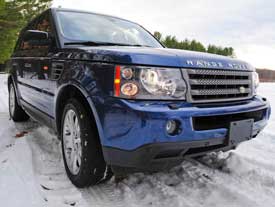
Designed from the ground up with a combination of Ford and Jaguar technology these new trucks are by a large margin the most reliable vehicles Land Rover has ever offered.
Even with the independent suspension, Land Rover’s all-new Terrain Response makes these vehicles very capable off road. The system has proven trouble free, even in winter in New England, where trucks are exposed to salty water.
The main suspension weaknesses we see are the front control arms (currently in 2012— a $1,500 repair at 60,000 miles) and sway bars. The bars wear out and clunk; replacement is time consuming as the body has to be lifted from the subframe to remove the worn bars.
Air suspension came standard on all models, and it has been reliable. Now that these trucks are getting old, people are looking at conversion to coil springs. Depending on shock ad spring choices, kits cost from $700 to $1,500. Installation (including reprogramming) takes roughly a day.
Companies like ARB are bringing out more and more off-road accessories for these trucks, and they are fine performers for all who venture into the woods or rocks with them. Thanks to electronics, they can outperform their more traditional brothers in many situations.
The LR3 was replaced by the LR4, and the Range Rover Sport saw a major upgrade for the 2010 model year. Changes included a more powerful set of engines, and substantial improvements to the interior and electronics.
This is the last traditionally British-designed Range Rover; the 2013 replacement was designed under Tata ownership and as nice as it is, it shows considerable Indian influence. That change has made the 2012 models “almost collectible” as they are the last of their kind.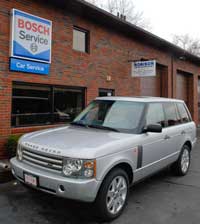
The original “new” Range Rover was designed with BMW technology when they owned the company. When Ford took over, they set about retrofitting Ford-sourced parts wherever they could. That became evident in mid-2005, when the 2006 model year Range Rover was released with major enhancements. The biggest mechanical change was the replacement of the BMW engine with a Ford-designed unit that was also used in Jaguar cars.
Some people still prefer the BMW engine but I think this V8 engine is actually the best motor Land Rover has ever fitted for the US market. Gas mileage is up, reliability is superb, and the engines are very durable. The standard version of this engine was rated for 305 bhp at 5,750 rpm and 325 lb/ft of torque at 4,000 rpm.
For the first time, Land Rover offered a serious high performance variant. The Supercharged Rover had bigger brakes, 20-inch wheels with aggressive tires, and a motor that delivered 400 bhp at 5,750 rpm and 420 lb/ft of torque at 3,500 rpm.
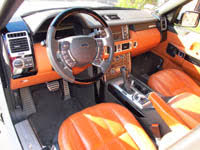
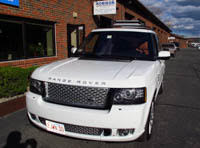
From a service standpoint, one noteworthy change was a return to Dex-cool in the radiator, and Mobil 1 5–40 is now our recommendation for the engine. 10,000 mile oil changes are not a good idea for these motors, which we recommend servicing at 7,500 mile intervals.
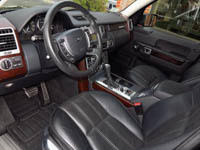 With every successive model year, more and more BMW technology was replaced by Ford. Most of these changes were good, and trouble free. One change that generated some criticism was the 2005 deletion of the switchable neutral transfer case. Every earlier Rover had a transfer case that could be shifted to neutral to allow four-wheel towing. That feature is lost in newer Range Rovers.
With every successive model year, more and more BMW technology was replaced by Ford. Most of these changes were good, and trouble free. One change that generated some criticism was the 2005 deletion of the switchable neutral transfer case. Every earlier Rover had a transfer case that could be shifted to neutral to allow four-wheel towing. That feature is lost in newer Range Rovers.
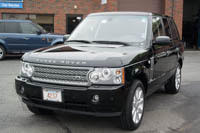
In 2007 Land Rover adapted the Terrain Response system that debuted in the 2006 Range Rover Sport models. That system optimizes suspension, transmission, and engine management to markedly improve traction and performance in marginal conditions.
An electronically controlled infinitely variable locking rear differential was added for 2007. It was standard on the Supercharged Range Rover and optional on the HSE. The infinitely variable locking electronic center differential introduced for 2006 was continued as standard on both models.
The electronic parking brake that first appeared in the 2005 Jaguar replaced the older mechanical system. As these cars age, that system is proving potentially problematic.
2010 saw a major facelift, with an increase in engine output of almost 80 horsepower for both the standard and supercharged versions. The dashboard because a large flat-panel display with simulated instruments (very nicely done). The standard navigation was upgraded, as was the entertainment electronics.
Bluetooth phone is standard on these cars for calls; audio streaming is not supported.
Land Rover introduced the next series of Range Rover for the 2003 model year. These vehicles were a significant departure from any previous Land Rover product. The most noticeable change was the adoption of a BMW 7-series drivetrain.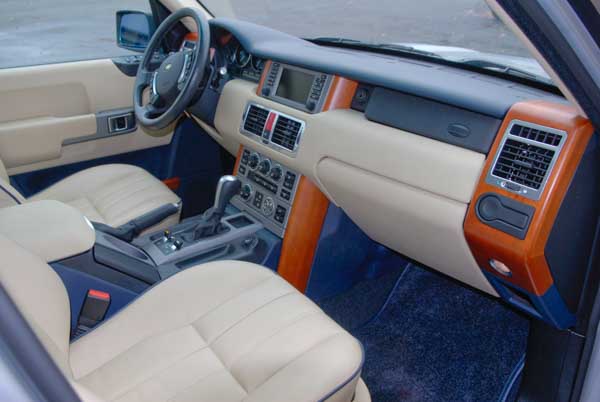
The BMW V8 is an excellent motor, and the rest of the driveline is solid too. The vulnerability of the older Range Rover to overheating and engine failure diminished greatly with these models. Engines got more powerful, and they last longer provided they are cared for.
Care is the watchword as these trucks get older. 2003 Rovers were advertised as having oil change intervals up to 15,000 miles. In my experience, that is way to long to run the oil, even if it's good synthetic. Engines that have been run that far will often have sludge in the engine, and you’ll see evidence of crud in the oil filter housing. I suggest changing oil on these rigs annually, or at 7,500–10,000 mile intervals in normal use. Do that and these motors will last forever.
It’s critical to use the right oil. At Robison Service we use Mobil 1 0–40 or BMW synthetic.
Expect water pump, hose, and radiator failure toward 100,000 miles. I suggest replacing at least some of those parts preventatively. These vehicles used an electric thermostat. If the heater shorts out, it can melt the wires in the harness that can lead to additional costly repair.
Note that these trucks need the BMW-style blue engine coolant. Do not use traditional green coolant or the orange Dex cool.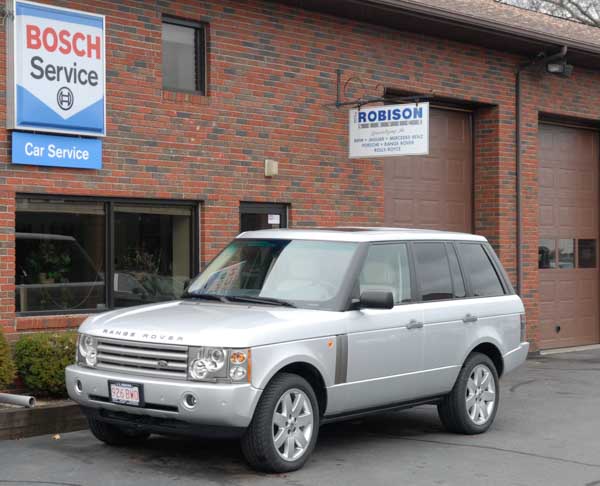
Front differentials are a weakness on these trucks. There was a recall on them for some models but all are vulnerable, especially if run hard towing or off road.
Transmissions in these models were “service free.” If you buy one of these rigs used, the first thing I’d suggest is flushing the transmission with the proper ZF fluid. Otherwise, “service free” means you drive it till it fails, then swap out a $5,000 gearbox.
Air suspension came standard on all models, and it has been reliable. Now that these trucks are getting old, people are looking at conversion to coil springs. Depending on shock ad spring choices, kits cost from $900 to $1,500. Installation (including reprogramming) takes roughly a day. Note that the conversion does not replace the shocks. If you have worn out shocks, best to repair the air suspension because the air springs and shocks are integrated in these cars.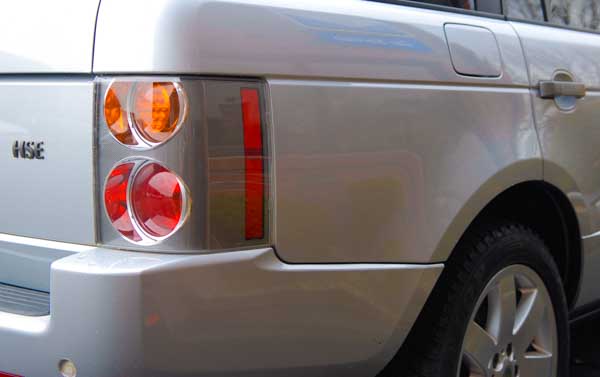
These Range Rovers were the first Land Rover vehicles to use Bosch CAN bus technology to connect the various computers. It’s a powerful system, but specialized diagnostic equipment is needed to talk to it. Look for a shop with Autologic or T4 if you want service on one of these trucks. Many BMW specialists have taken up service on these vehicles, because they share so much technology.
You will see lots of other BMW influence in these trucks, like the steering column, the seats and heaters, the climate control, and stereo. These trucks are far more sophisticated than anything Rover sold before and they presented a technical challenge to dealers. Now, years down the road, they are established as sold members of the Land Rover family.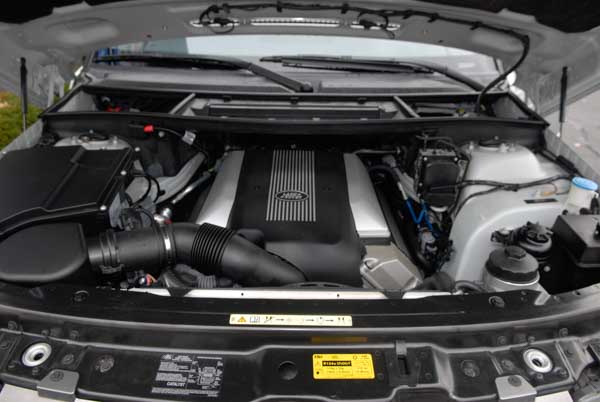
2003 and 2004 models are very similar. Xenon headlamps were optional in 2003, but they became standard for 2004. The 2005 introduced some changes in the electronics that make them more desirable. Navigation moved to a touch screen, which was much more functional. A new 4wd status display screen was added. The electronics was all better integrated with the switch to BMW fiber optic-based MOST technology.
The Discovery II offered a number of enhancements over the 1994-1999 Discovery I models. The 1999-2002 vehicles remain good (subject to upkeep and aging) but the end-of-line 2003-4 models have proven flawed.
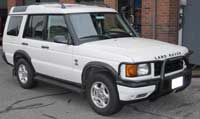
The Discovery II received a significant facelift for the 2003–2004 model year to follow the appearance of the L322 Range Rover that appeared in 2003. The update included new front lights and interior changes. The upgraded lights were a big improvement, and the 4.6 engine seemed like a welcome upgrade, but any benefit of that was lost when the motors proved unreliable.
If you are looking at a 2003–4 Disco II be very careful around the motor. Ticks and raps are early signs of a block going bad, as is excess cooling system pressure. If you are looking at a 4.6 Discovery I suggest you assume the engine will need a $11-14k overhaul at some point, unless you are shown proof that the engine was already rebuilt with a new front cover and flanged cylinder liners.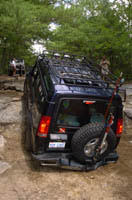
Off road enthusiasts celebrated the return of the lockable differential for the 2004 model year. Earlier models could be converted to lock, but the kit cost is near $1,000. We used to say these later models were the best for off-road use but the frame weakness caused us to withdraw that recommendation last year (2014).
Furthermore, if you are into off-roading you may find the Disco II more limited in terms of accessories. A Disco I remains the best choice for a serious off-roader because it shares more underbody heritage with the Defender (including a much stronger frame), but a Disco II, properly built, can be extremely capable.
On the highway and around town the Disco II is a hands-down winner over the previous model provided you can get past the engine and frame weaknesses. Many if not most of these vehicles will be scrapped in coming years over those problems and we predict good Discovery II trucks will soon become rare. That may have a positive effect on value. We are beginning to see some interest in major overhaul and restoration of these vehicles.
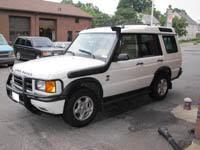
Read more on the Robison Service blog

P38 Range Rovers were introduced for the 1995 model year, when they were sold alongside the original Range Rover (renamed the Range Rover Classic) The P38 Rover was built through the 2002 model year, when it was replaced by the next generation of the full-size Range Rover.
P38 Range Rovers come in 4.0SE and 4.6HSE versions. The 4.0 is the “base” version, though both are fully loaded in terms of luxury features.
If you drive a lot on fast highways you’ll probably find a 4.6 quite a bit better. Off road, though, the 17-inch wheels are more easily damaged.
I strongly suggest you have new Rovers serviced only by shops with T4 or Autologic diagnostic systems. Various computers that are only accessible with these tools control almost all functions on this series truck. Shops that don’t have the correct tools will waste hours and parts in diagnosis.
At 100,000 miles air bags will start going bad. Look for dry rot cracks at tops and bottoms. Symptoms of bad air bags are a vehicle that sags or goes flat overnight. Some people regard the air suspension as a very desirable feature on this model. Front air bags cost roughly $300 each to replace, plus labor. Rear bags cost a bit more, and there are many other parts that fail in these systems as they age. Robison Service converts 1995–2001 Range Rovers to coil springs for about $1,700 with new Bilstein shocks adding $500 to the tab (as of January 2012).
At this point, it’s a plus in the used car market if a Rover has been converted to coil springs. The hassle of the air suspension as the cars age and more pieces fail just isn’t worth it for most people. People who really want air suspension are probably better off in one of the current series Range Rovers or Sports.
Coolant leaks onto the passenger floor are almost always heater core o-rings, not the cores themselves. Robison Service can usually correct the problem in 2-4 hours.
1996 to 1998 4.0 engines are terrible oil leakers. These are the common leaks: cylinder head gaskets, intake gaskets, front seals, oil cooler lines, and valve cover gaskets. Updated repair parts are available. Always surface heads when you change head gaskets or you’ll be doing the job again in a year or two.
Rotate your original Michelin tires every 7500 miles. If you don’t do this you’ll get a sawtooth wear pattern on the insides of the front tires and within 30,000 miles your truck will sound like it has bad wheel bearings. To check for this wear run your hand around the inner circumference of the front tires. Go one way, then the other. You’ll probably feel the saw teeth one way while the other will be smooth.
Pre 1998 4.0 engines are prone to develop carbon buildup on the exhaust valve stems. Symptoms are intermittent missing or staggering of the engine, usually on long drives and at high speed. Frequently a check engine light is seen with random misfire codes and specific cylinder misfire codes. Read my articles (Carbon Fouling#1, Carbon Fouling#2) from American Rovers about fixing this problem. Repair is costly, generally over $2,500.
Avoid picking these trucks up on wheel free lifts. Doing so can separate an airbag or damage a sensor, both of which will require a visit to the shop. To remove tires jack up or lift under the axles.
1999 and newer trucks with Bosch electronics are much better than any previous Range Rover product. Oil leaks are reduced, engines have less valve trouble, they run better, etc.
Read how our CustomFind™ Service can buy you a New Range Rover.
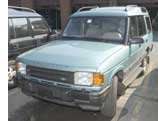 Most of the 1997-1999 Discoveries on the used market today are third-owner trucks. Most were leased for two to three years, bought by a second owner, and they are now offered to you. Many of these lease cars received little or no upkeep, and it shows. Avoid cars with sludge in the oil filler — an indication of insufficient oil changes.
Most of the 1997-1999 Discoveries on the used market today are third-owner trucks. Most were leased for two to three years, bought by a second owner, and they are now offered to you. Many of these lease cars received little or no upkeep, and it shows. Avoid cars with sludge in the oil filler — an indication of insufficient oil changes.
Build quality of the 1996-7 Discoveries is the lowest of any modern Land Rover product. Avoid these years if possible.
Check the tie rod ends carefully, especially the one at the steering gear pitman arm. If they have any play they should be changed. These joints can fail without warning. For that reason if you are at 60,000 miles we suggest replacing any original pitman arm joints, and we’d change the other three also by 90,000. If the pitman arm joint falls off you’ll lose all steering control. We’ve seen several Rovers crash as a result of this failure.
These joints are under $40 each, and I suggest changing them all if their age is unknown. Sometimes the joints can’t be unscrewed from the rods, in which case a whole new rod will be needed.
1996 to 1998 4.0 engines are terrible oil leakers. These are the common leaks: cylinder head gaskets, intake gaskets, front seals, oil cooler lines, oil pans, rear main seals and valve cover gaskets. Updated repair parts are available. Always surface heads when you change head gaskets or you’ll be doing the job again in a year or two.
Head gaskets can leak both oil and coolant onto the round, especially in winter. Coolant leaks are also found on the intake, the hoses, and the water pump. After the water pump has been changed watch for oil or coolant leaks from the front cover – that gasket often fails after the stress of refitting the water pump.
Replacement of valve cover gaskets is a three-hour job. Replacement of the intake gaskets add three more hours. Replacement of head gaskets includes the first two jobs, and it’s nearer two full days of work.
You can change the oil pan gasket and the rear cross seals in a few hours, but a full rear main seal job is 10 hours or so, with removal of the transmission and transfer case for access.
Oil all the door hinges, and pay particular attention to the underside of the rear gate handle. If you don’t keep them oiled you’ll be paying to fix doors that don’t open one day. Flat rate mechanics seldom spend the 10-15 minutes it takes to do this unless asked, in our experience.
Rotate your original Michelin tires every 7500 miles. If you don’t do this you’ll get a sawtooth wear pattern on the insides of the front tires and within 30,000 miles your truck will sound like it has bad wheel bearings. To check for this wear run your hand around the inner circumference of the front tires. Go one way, then the other. You’ll probably feel the saw teeth one way while the other will be smooth. Be sure to keep an 8-10PSI pressure differential in favor of the rear tires.
Don’t disconnect the battery unless absolutely necessary. Doing so often sets a fault code that put on the SRS light. It can only be cleared by a dealer or someone like us with the Autologic tester. Use jumpers and a battery saver when you swap batteries to prevent this hassle.
1996 and newer 4.0 engines are prone to develop carbon buildup on the exhaust valve stems. Symptoms are intermittent missing or staggering of the engine, usually on long drives and at high speed. Frequently a check engine light is seen with random misfire codes and specific cylinder misfire codes. Read my articles (Carbon Fouling#1, Carbon Fouling#2) from American Rovers about fixing this problem. Repair is costly, generally over $2,000.
ABS lights that come on after replacing front brakes are often the result of sensors getting disturbed. Pull them out, reseat them, and if you’re lucky the problem will go away. They are not positively retained like on most cars. Another common cause of ABS lights coming on is loose wheel bearings.
Cooling fans on 1996 and newer trucks are known for coming apart. They can send blades through the hood. Check yours carefully for damage.
Transfer case linkages on Discos are prone to freezing up from rust if not shifted regularly. If your truck still shifts into low range and lock — Great! Keep it that way by shifting every week or so. Otherwise you’ll be into a 2-3 hours repair one day soon.
Read how our CustomFind™ Service can buy you a Discovery.
These are the original Land Rover product sold in America. Until 1995 they weren’t called “Classics”. That designation arrived in 1995 when the “New Range Rover” or 4.0SE was introduced.
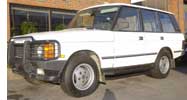 On 1993–1995 Rovers you must check the tie rod ends carefully, especially the one at the steering gear pitman arm. If they have any play they should be changed. These joints can fail without warning. For that reason if you are at 60,000 miles we suggest replacing any original pitman arm joints, and we’d change the other three also by 90,000. If the pitman arm joint falls off you’ll lose all steering control. We’ve seen several Rovers crash as a result of this failure. Older trucks use a different pitman arm connection that is not prone to fall in the street. Even still, they should be checked and serviced if loose.
On 1993–1995 Rovers you must check the tie rod ends carefully, especially the one at the steering gear pitman arm. If they have any play they should be changed. These joints can fail without warning. For that reason if you are at 60,000 miles we suggest replacing any original pitman arm joints, and we’d change the other three also by 90,000. If the pitman arm joint falls off you’ll lose all steering control. We’ve seen several Rovers crash as a result of this failure. Older trucks use a different pitman arm connection that is not prone to fall in the street. Even still, they should be checked and serviced if loose.
Most Range Rovers leak oil. These are the common Range Rover leaks: cylinder head gaskets, intake gaskets, front seals, oil cooler lines, oil pans, and valve cover gaskets. Always surface heads when you change head gaskets or you’ll be doing the job again in a year or two. Gaskets made for the 1996 4.0 Disco can be used with minor modification. They are of a better design.
The air suspension on 1993–1995 Classics is very unreliable and costly to fix. Kits to convert to coil springs are readily available and easy to fit. Allow a day for the job. Repairs to this air suspension system can easily run $2,000 — making the conversion kit very attractive.
Oil all the door hinges, especially the external door hinges on 1987–1989 models. If you don’t keep them oiled you’ll be paying to fix doors that don’t open one day. Dealers seldom spend the 10-15 minutes it takes to do this unless asked, in our experience.
Rotate your original Michelin tires every 7500 miles. If you don’t do this you’ll get a saw tooth wear pattern on the insides of the front tires and within 30,000 miles your truck will sound like it has bad wheel bearings. To check for this wear run your hand around the inner circumference of the front tires. Go one way, then the other. You’ll probably feel the saw teeth one way while the other will be smooth.
The rear glass gates rust out every 5–6 years in the Northeast. Replacements are about $1,300. An aluminum frame and several steel aftermarket options are available at lower cost.
Classics are prone to corrosion. Look for rust holes in the floorboards in front, in the rocker sills, on the seams where the front fenders attach under the hood, and around the rear lamp housings. If you live where it snows, I strongly recommend Waxoyl.
Read how our CustomFind™ Service can buy you a Classic.
There are three types of Defender on the market in the US: grey market trucks that have been privately imported; four-door 110 models that were imported by Land Rover North America (LRNA) in 1993, and two-door 90 models imported by LRNA in 1994, 1995 and 1997.

The number refers to wheelbase. A 90 has a 90-inch wheelbase, 110 is 110 inches. In other countries they sell 130-inch trucks also. In comparison, Range Rover Classics are 100-inch wheelbase.
Defenders are sold elsewhere in the world with a variety of diesel and gas engines. The Defenders imported by LRNA are all V8 powered. These vehicles were imported in small quantity because they did not fully conform to safety and emission rules. Import ceased in 1997 because extensive redesign would be required to certify them continued US sale. As a result, prices have risen all out of proportion to their place in the Land Rover product family. Nowhere else in the world does a D90 cost more than a 4.6 Range Rover of the same vintage.
 My favorite Defenders are the white 110s. I've had several over the years. I sold my last one to Stuart Carpenter of Copley Motorcars in Boston three years ago. He still sends me photo Christmas cards of his dogs in the back of the thing.
My favorite Defenders are the white 110s. I've had several over the years. I sold my last one to Stuart Carpenter of Copley Motorcars in Boston three years ago. He still sends me photo Christmas cards of his dogs in the back of the thing.
The 110 models are quite rare, with only 500 being imported. All are white, with standard transmission and 3.9 litre V8 engine. Almost 2,000 of the smaller D90 models were sold here. All 1994 and many 1995 were soft-top units. The hardtop 1995 trucks had a removable (with difficulty) plastic hard top. 1997 trucks had either a soft top or a full metal (not easily removable) hardtop.
1994 and 1995 Defenders have standard transmissions with 3.9 liter V8 engines. 1997 Defenders have automatic transmissions with the 4.0 liter V8 engine. All in all, the power train in 1995 trucks is the best. Most 1994 and 1995 Defenders did not have air conditioning. Most 1997s did.
The original transmission fitted to 1994–5 Defenders was weak. Check for proper operation. In 1997 trucks the engines are prone to carbon fouling of the valves. All years are prone to oil leaks.
Watch for rust and corrosion on any Defender. Most of the external hardware is of mild steel. The bolts on things like the roll cage rust and are unsightly. I suggest stainless steel hardware, which can be ordered from Rovers North. If you own a Defender I strongly suggest that you have it treated with Waxoyl.
The other thing to watch for on Defenders is hard use. Many were fitted with lockers, big wheels, and used hard off road. These modifications strain the drive line heavily and as a result many are tired when offered for sale. If possible, buy a Defender that has not seen much off road use.
J E Robison Service Co Inc of Springfield, Massachusetts, is an independent business that specializes in the sale and service of used Land Rovers. We are not an authorized Land Rover dealership, we do not sell brand new Land Rovers and we are not otherwise affiliated with, originating from, sponsored by, or approved by Jaguar Land Rover North America, LLC in any way.